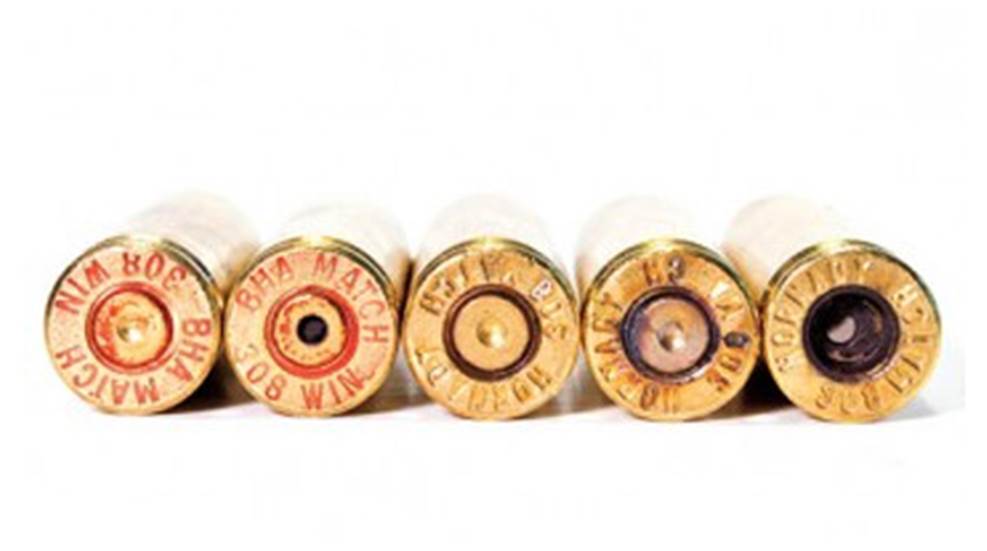About Winchester Primers
Wiki Article
The Single Strategy To Use For Winchester Primers
Table of ContentsSome Ideas on Federal Primers You Need To KnowWinchester Primers Fundamentals ExplainedGetting My Pistol Primers To WorkSome Known Details About Primers In Stock What Does Small Pistol Primers Mean?
Component of the weapon cartridge for initiating propellant burning In guns and weapons, the guide () is the chemical and/or gadget in charge of starting the propellant burning that will certainly press the projectiles out of the gun barrel. In very early black powder guns such as muzzleloaders, the primer was basically the very same chemical as the primary propellant (albeit normally in a finer-powdered form), however put right into an exterior flash frying pan, where it could be stired up by an ignition source such as a sluggish suit or a flintlock Some muzzleloaders have primers like cap gun caps.
In weapons the primers are regularly a separate element, put inside the barrel to the rear of the major propellant chargebut there are other examples of weapons, including for example some automatic weapons, made to fire cartridges with essential electric primers.
5 Easy Facts About Primers In Stock Described

This hole was full of carefully ground powder, which was after that fired up with a hot cinder or torch. With the introduction of hand-held guns, this came to be an unfavorable way of shooting a weapon. Holding a burning stick while attempting to pour a cost of black powder very carefully down a barrel threatens, and trying to hold the weapon with one hand while concurrently intending at the target and looking for the touchhole makes it extremely difficult to fire accurately. [] The first attempt to make the process of shooting a little arm less complicated was the "matchlock".
, and dried out. After the weapon was filled as well as the touchhole topped with powder, the burning suggestion of the match was placed so that the lock would bring it into contact with the touchhole.
The Single Strategy To Use For Federal Primers
This brought the suit to the touchhole, sparking the powder. With cautious focus, the slow-burning suit can be maintained melting for long durations of time, and making use of the lock device made relatively precise fire possible. The next transformation in ignition modern technology was the "wheel-lock". It made use of a spring-loaded, serrated wheel which scrubed versus an item of iron pyrite, comparable to a contemporary lighter.
you could try this out

The covered flashpan likewise gave some capacity to withstand bad weather condition. pistol primers. Wind, rain, and damp weather would certainly make a matchlock useless, but a wheel-lock that was loaded and waterproofed with a little bit of grease around the flashpan could be fired under most problems. The wheel-lock enjoyed just a short duration of appeal prior to being superseded by an easier, extra durable layout.
Pistol Primers Fundamentals Explained
The flint was held in a spring-loaded arm, called the "cock" from the resemblance of its activity to a pecking hen. The penis rotated with about a 90-degree arc and was held in the tensioned, or "cocked" position by a trigger.The "half-cock" position held the penis halfway back, and used a deep notch to ensure that shooting would not release the dick. Half-cock was a safety and security position, made use of when filling, storing or bring a packed flintlock. The "full-cock" position held the penis all the means back as well as was the position where the weapon was terminated.
It served as both a flashpan cover and also a steel striking surface area for the flint. The frizzen was pivoted and spring-loaded to ensure that it would secure the open or closed position. When shut, the striking surface area was positioned to ensure that the flint would strike at the correct angle to produce a trigger.
How Small Pistol Primers can Save You Time, Stress, and Money.
The flintlock system was less complex and more powerful than the wheel-lock, and the flint and steel offered an excellent, dependable resource of ignition. The flintlock stayed in military solution for over 200 years, and also flintlocks are still made today for historic re-enactments as well as muzzle-loading target competitors, as well as for seekers who appreciate the extra difficulty that the flintlock supplies.Percussion ignition was created by Scottish clergyman Rev. Alexander John Forsyth in 1807 yet needed additionally refinements prior to it was slowly approved in the 1820s to 1830s. By the middle of the 19th century, the percussion or caplock system was well developed. It was embraced by both sides in the American Civil Battle, as it was less complex and a lot more reputable than the flintlock.
The flashpan as well as frizzen were gotten rid of as well as replaced by a little, hollow straight cyndrical tube (drum) screwed into the bored-out and tapped flash opening and also bring a "nipple area" over which the cap might be fitted. A "hammer" which likewise had half-cock (for packing and also using the cap) and full-cock placements replaced the cock.
Report this wiki page